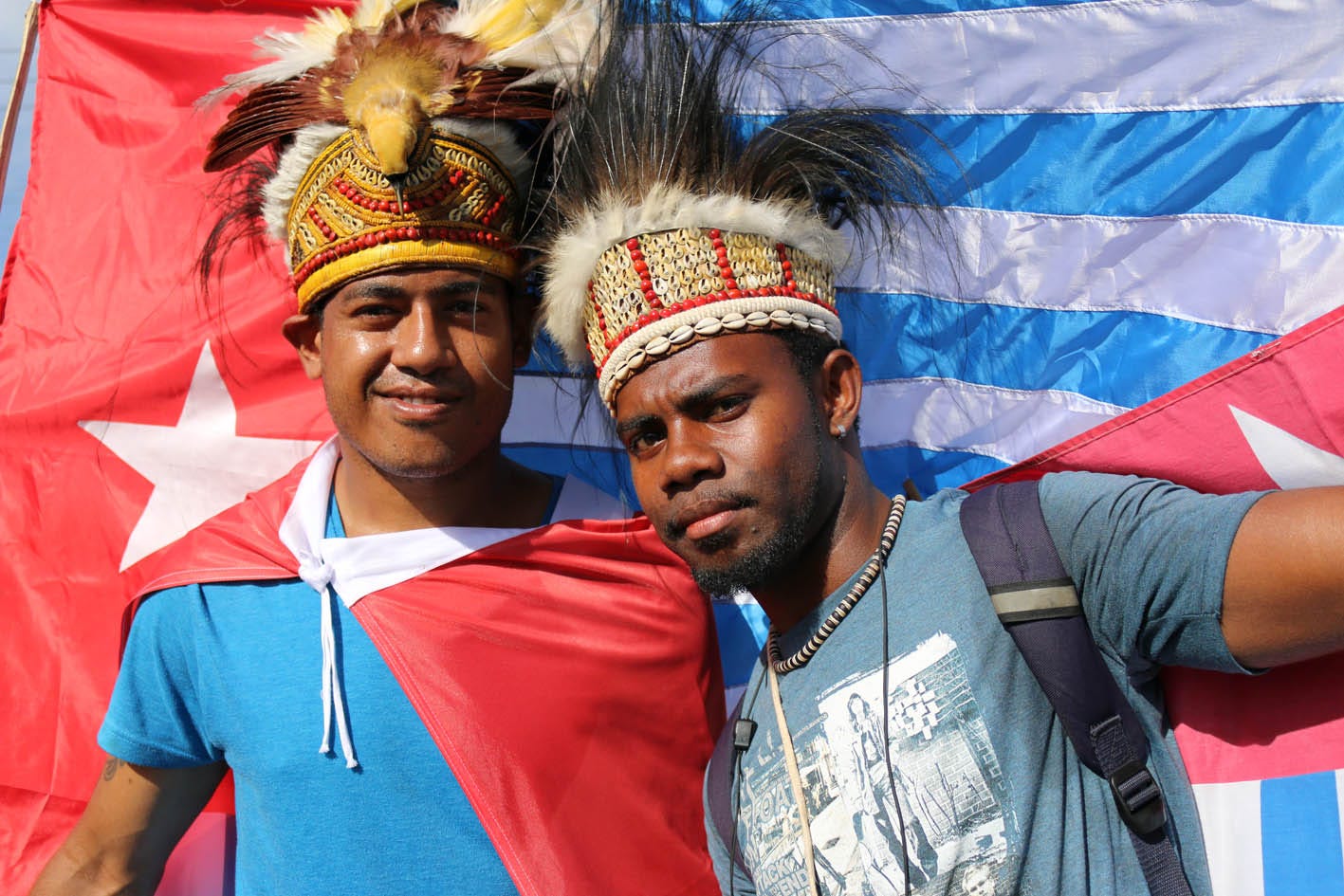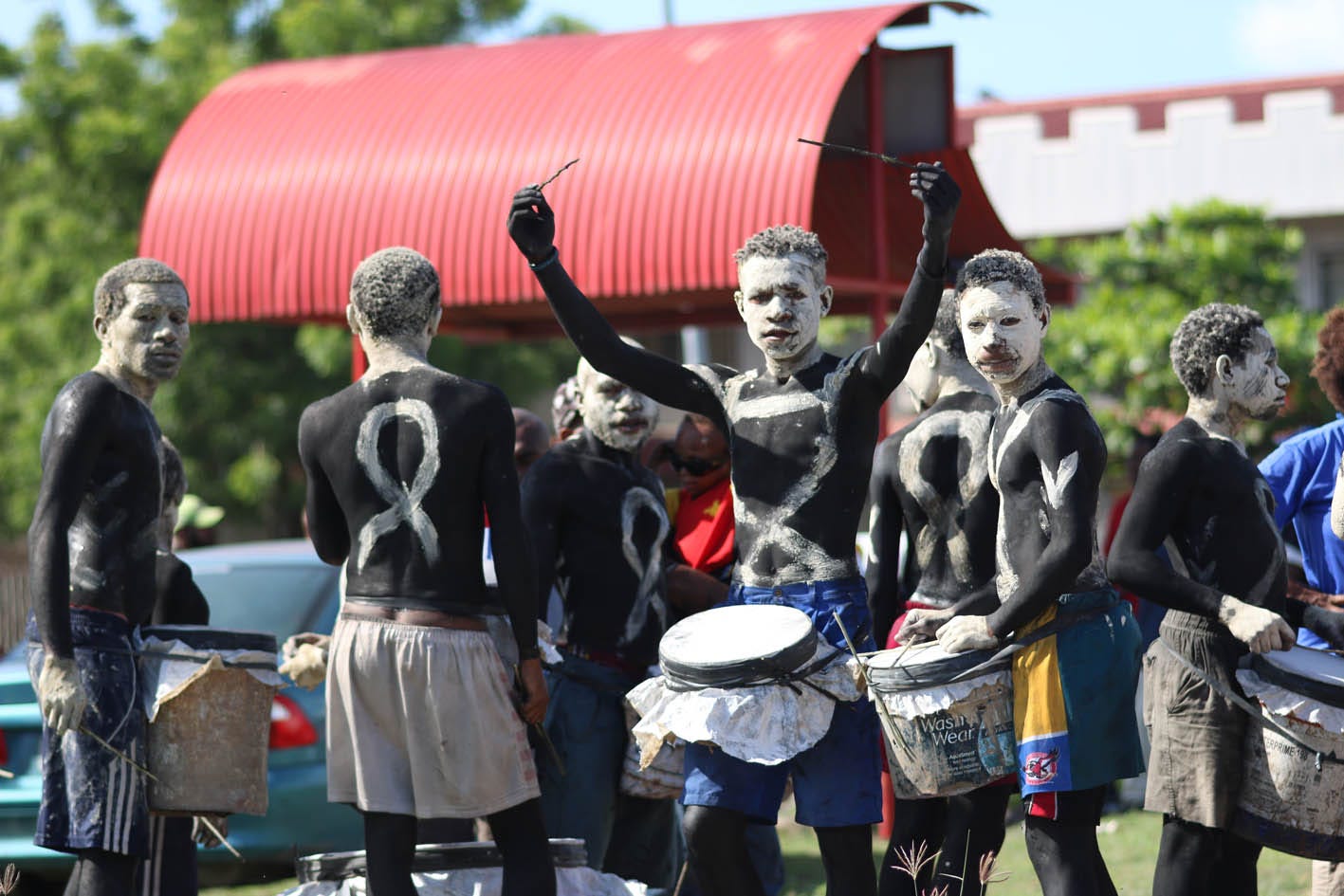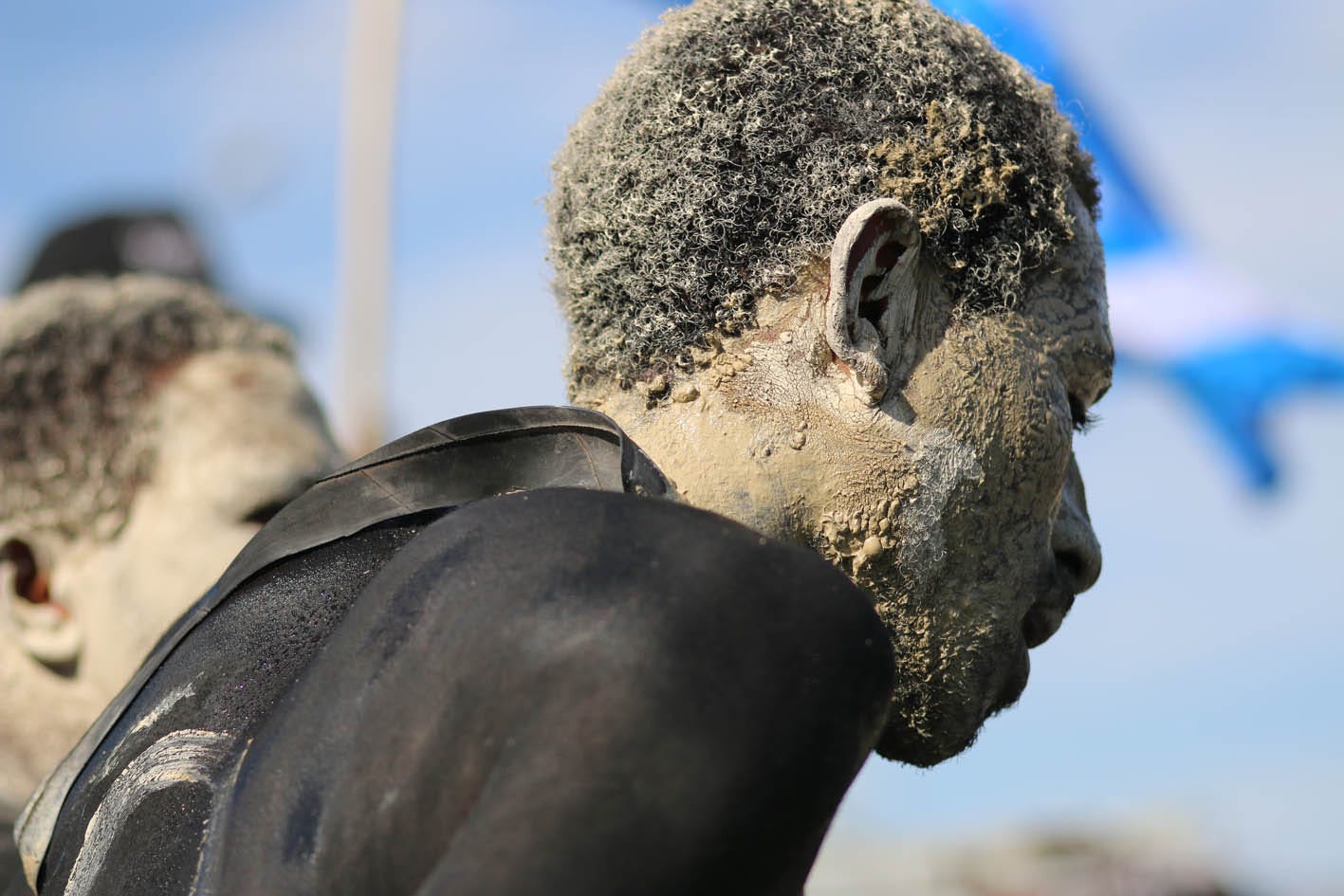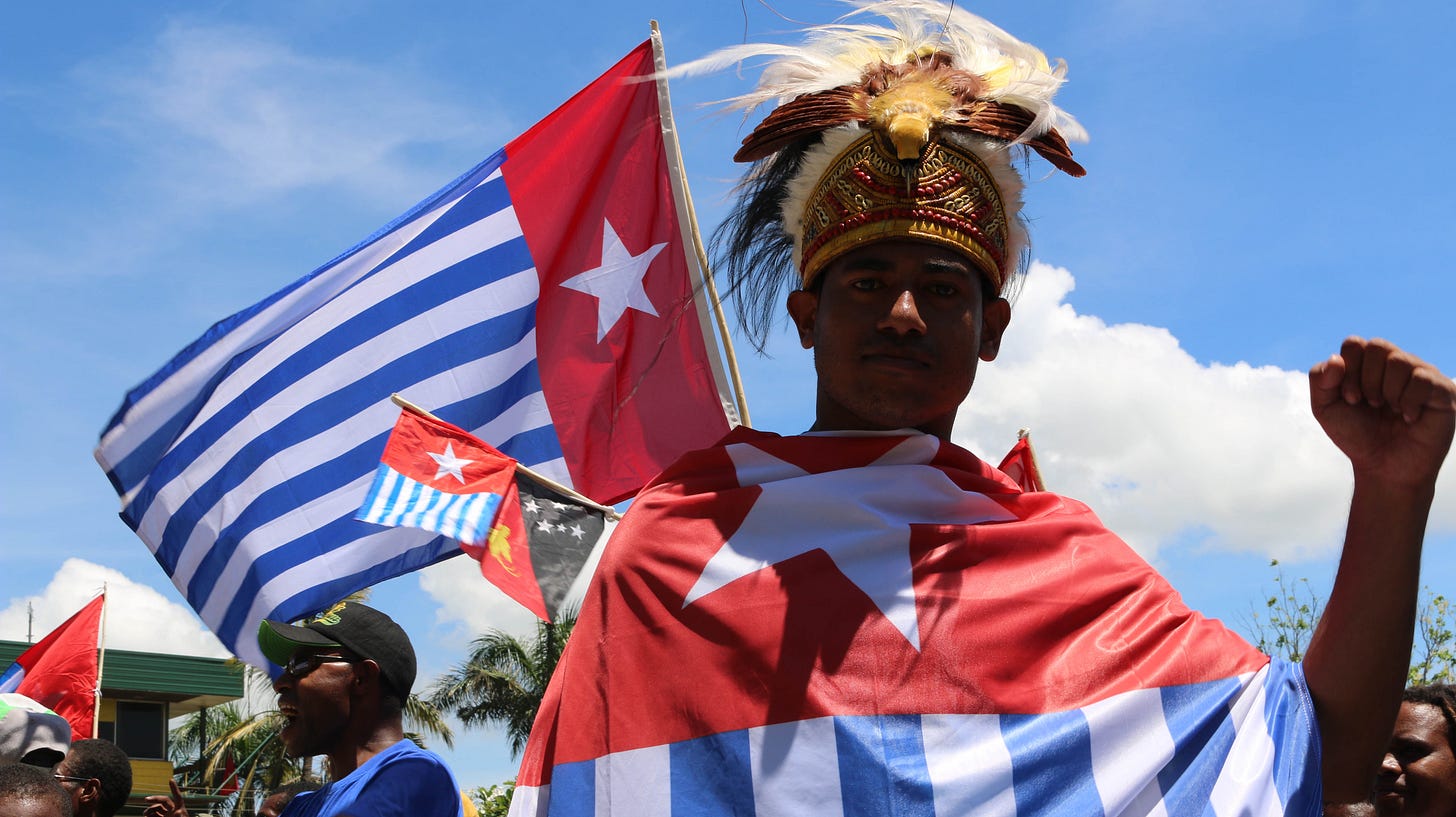Morning Star rises in the Amazon of the Pacific as West Papuans mark Independence Day
There is a real-life Pandora from Avatar. West Papua, with the world’s third largest rainforest, is being destroyed by Indonesia and the global corporations
Decent Indonesians have no idea what their government is doing in West Papua
New Trans-Papua highway exposes rainforest to logging, mining, plantations
Indonesia, global corporations, stole a mountain of gold, destroying wilderness
Up to a million migrants made West Papuans a minority in just 60 years
Morning Star independence flag raised despite jail, shootings, genocide
Australia gives more than $500 million to Ukraine, ignores its northern border
Today is the Independence Day you never heard of, in a real-life Avatar Pandora, on Australia’s northern doorstep.
Every year the Morning Star flag is raised on December 1 then punished by murder or jail in West Papua, the Amazon of the Pacific.
Few people ever visit this secret world of treasure and torture even though it is in the island of New Guinea, just 4km north of Australia. You could paddle it in a canoe.
An emerald in a tropical ocean, the island is green with the world’s third-largest rainforests that stretch from sweaty coasts to misty highlands bearing precious wood. At 785,753 sq km, it is the world’s second-largest island after Greenland.
It is the closest thing on Earth to Pandora, the mythical world of Avatar.
Colourful creatures found nowhere else live in its remote pockets: a tiny frog thought to be the world’s smallest vertebrate at 7.7mm long, a poison bird whose feathers contain powerful neurotoxins that can paralyse or kill. New discoveries are made all the time.

And just like in Avatar, a genocidal disaster has been unfolding in West Papua as Indonesian colonists and global corporations destroy the native people and bulldoze their forests to extract the resources for themselves.
The problem is that the West Papuans were living on a mountain of gold.
Mount Carstensz (Puncak Jaya), is the highest island mountain on Earth at 4884m, and is part of a range whose jagged spine runs smack through the middle of West Papua.
In 1936 a Dutch geologist was climbing the glacial peak when he noticed veins of green copper streaking through a nearby black outcrop. He called it Ertsberg, Dutch for “Ore Mountain”. He brought back samples and wrote a report.
In 1959 a geologist at US mining company Freeport Minerals heard about the Dutch report and led an expedition to Ertsberg, confirming a massive deposit.

At the same time as Freeport was sending its expedition to the golden mountains, the Dutch were preparing West Papuans for independence. The Netherlands had colonised West Papua in 1898, but they were now leaving their colonies.
Unfortunately the Dutch had also colonised Indonesia, and when Jakarta broke free in 1949 they wanted West Papua.
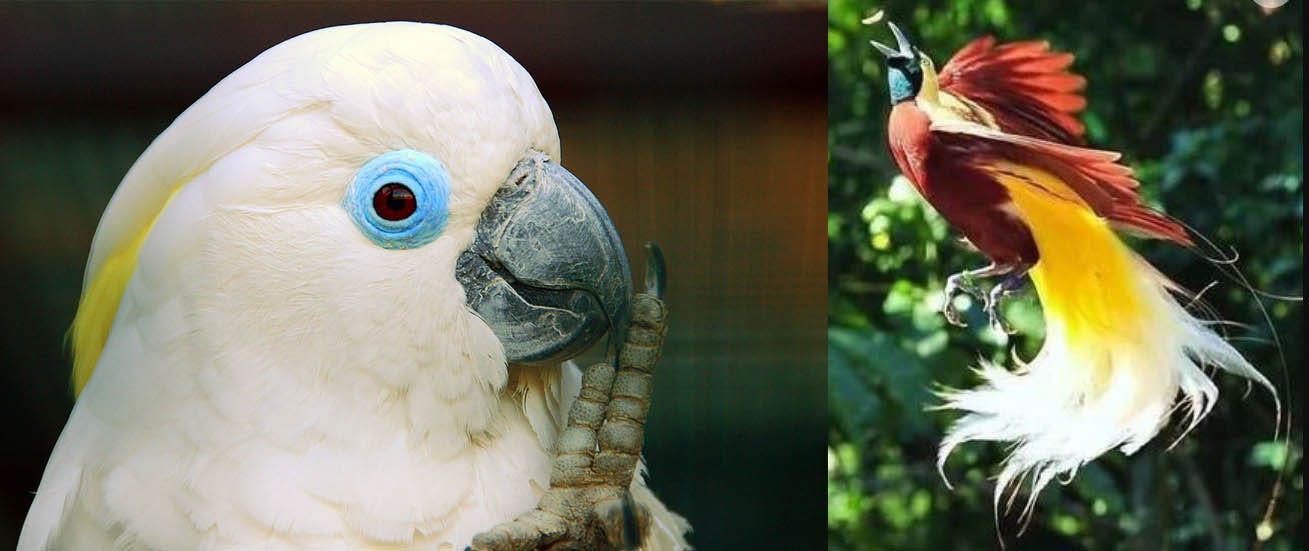
New Guinea’s birds of paradise show their astonishing mating dances
But West Papua would not join them. The two nations would never get along. West Papua is different from Indonesia in every way: culturally, ethnically, linguistically, religiously, historically and geographically.
Even the flora and fauna are different. Indonesia lies across the Wallace Line, a deep-water channel marking an uncrossable boundary of continental shelves, dividing Asia from the Australia-Pacific region.
Tigers and rhinoceroses are only found on the Indonesian side while marsupials and monotremes are only found on the Papuan side.
For 60,000 years, New Guinea was home to thousands of unique tribes living as hunter-gatherers or in small farming villages. They are most closely related to Pacific Islanders and Australian Aborigines.
During the last ice age New Guinea and Australia were joined in one big super continent called Sahul, on the same continental shelf. Sea levels were lower and ancient people walked across the Torres Plain before it became the Torres Strait. Tree kangaroos and blue-eyed cockatoos are found in New Guinea, and there have even been reports of thylacine sightings in the highlands – the extinct Tasmanian tiger.
Indonesia is majority populated by Malay Muslims while West Papuans are Melanesians who are mostly Christian due to European colonisation. They are ethnically one people with their brothers and sisters in Papua New Guinea and don’t want to be divided from them. Indonesians and Papuans also have vastly different cultures: for time out of mind Papuan village life has revolved around pigs as a primary source of meat, while Islam says pork is forbidden and unclean.
“Those savages are threatening our whole operation”: Avatar could have been written about Indonesia’s brutal mining occupation of West Papua as real life follows the script
West Papuans did not want to be ruled from Jakarta by Javanese Muslims, many of whom look down on them, to this day calling them “monkeys” and “savages”.
Recognising the two were incompatible, the Dutch prepared West Papua for their independence during the 1950s.
On December 1, 1961, the West Papuans raised the Morning Star for the first time and sang their national anthem.
Immediately, Indonesia went on the attack issuing the Trikora, the triple command, to annex West Papua. They sent in armed infiltrators then paratroopers dropped in from the air.
Not wanting trouble, the Netherlands handed West Papua to the UN which let Indonesia administer the region, as long as they agreed to let the people choose their own future within five years.
US President Richard Nixon and his national security advisor Henry Kissinger were willing to welcome an Indonesian occupation.

This resulted in the 1969 fraud, the “Act of Free Choice”, where Indonesian soldiers rounded up Papuans to vote in a show-of-hands at gunpoint. Dissenters were taken away and a total of 1022 Papuans voted to join Indonesia. Despite international condemnation the UN rubber stamped this sham poll and West Papua was formally annexed.
The Papuans have been fighting ever since.
They fled to the jungles and attacked the Indonesians with rocks and sticks, bows and arrows, and any guns they could find left over from World War II.
The Indonesians strafed them from helicopters donated by Australia, dropped napalm and cluster bombs on them and burnt them with chemical weapons.
Indonesia is estimated to have killed one seventh of the 1961 pre-invasion West Papuan population, either directly or by starvation and sickness from forced relocation.

Only a settlement colonisation is permanent, so Jakarta made West Papua a number one priority for its transmigrassi program, shipping in up to a million migrants to outnumber the indigenous Papuans in their own land.
In 1971, Papuans made up 96 percent of the population of West Papua according to Census figures cited by respected academic Jim Elmslie.
By 2010, Papuans had fallen to just 66 percent of the population, a Census figure which Dr Elmslie noted was suspiciously high and may reflect government obfuscation.
Author and West Papua researcher Jason MacLeod noted the Melanesian population on both sides of New Guinea had been roughly equal in 1969.
“Now you’ve got a population of around 7 million Melanesians in Papua New Guinea, and around about 1.5 million Melanesians in West Papua,” he told the Red Line podcast.
“That’s a huge population difference and you’ve got to ask: why is that happening.”
West Papuans say Indonesia wants their resources but not the people: and West Papua is indeed rich beyond imagination.
Ertsberg, the first giant ore mountain, has now been gouged off the map, replaced by a deep pit with poison fluid in the bottom. More ore was found at nearby Grasberg, Dutch for “grass mountain”, which became a giant hole more than a mile wide. The miners are now moving into underground tunnels.
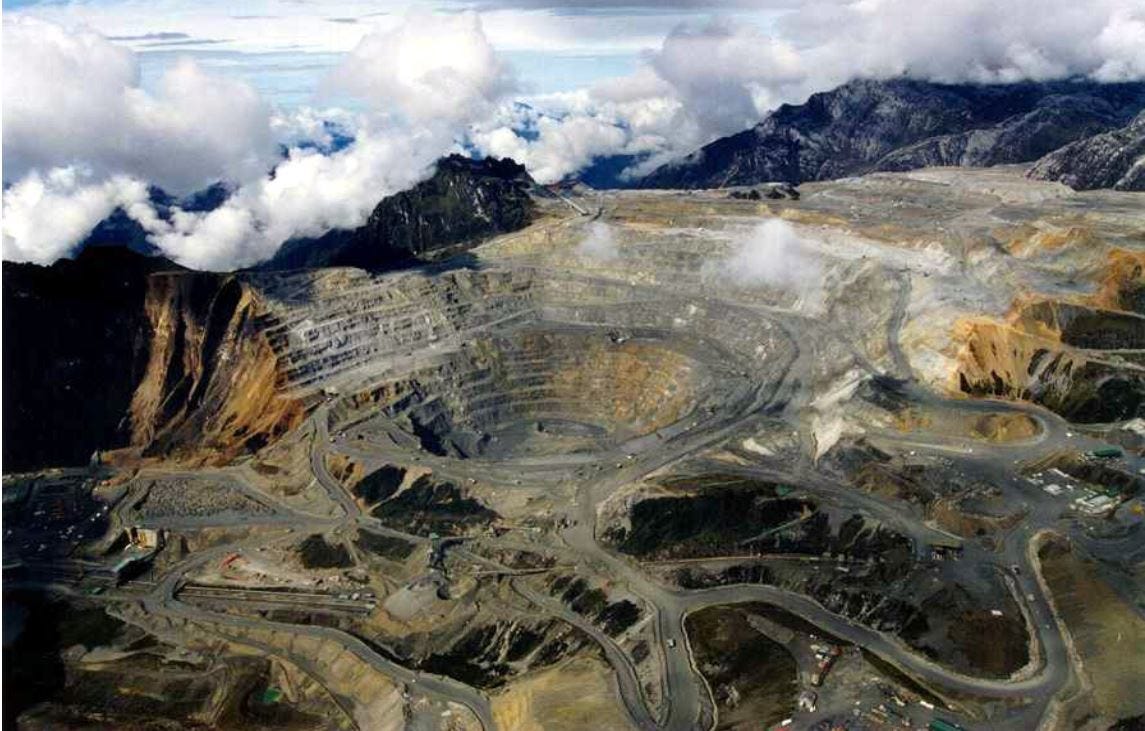
The Grasberg complex was the biggest copper and gold deposit in the world. It also produced silver.
Indonesia and the US divided up the spoils before Jakarta’s annexation was even formalised. Freeport signed the contract in 1967. Henry Kissinger later became a director from 1988 to 1995.
From 1990 to the end of 2019, the Grasberg minerals district produced 33 billion pounds of copper (15 million tonnes) and 53 million ounces of gold, Freeport McMoRan says on its website.
Grasberg is now one of Indonesia’s largest sources of revenue.
In 2018, state-owned PT Inalum bought 51.2% of Grasberg for US$3.85b, taking over Rio Tinto’s holding. Jakarta changed the law to limit foreign ownership of any companies issued new mining licenses to 49 percent, AP reported.
West Papua also has other treasure: valuable timbers and fertile land that can be bulldozed to plant palm oil monocrops.
Two South Korean firms Posco (a World Economic Forum partner, formerly Daewoo), and Korindo along with a handful of Indonesian oligarchs have done just that. Al Jazeera’s 101 East investigation alleges one firm paid just US$200,000 for land it would earn a billion dollars from, destroying it for palm plantations and selling the timber.
According to a 2021 Greenpeace International report, the Indonesian government has issued permits to destroy just under a million hectares of forest for plantations in Papua Province alone since 2000.
The majority of that land was still forested as of 2021 and the West Papuan provincial government then revoked 12 large licenses following a corruption review. The lack of roads through the rugged terrain has saved the forests from loggers and miners. Greenpeace reports that 80 percent of West Papua is still covered in forest thanks to the difficulty of access – but this protection is coming to an end.
The 4000km Trans-Papua highway will expose even the remotest highlands to massive farming and logging.
Indonesia also wants to turn Papuan forests into industrial farmland to feed their expanding population. In the 61 years from 1960 to 2021 the Indonesian population more than doubled from 87.7 million to 276.4 million people, according to the WorldData website. They have already destroyed much of their great forests in Kalimantan and Sumatra.
West Papua would lose 13 percent of its forest in the next 14 years (by 2036) as a direct result of the highway according to a study published in the journal Biological Conservation, lead author David Gaveau wrote in The Coversation.

Despite Papuan attacks on Indonesian road workers and the sabotage of equipment, the highway is near completion. When finished it will stretch from Sorong in the west, to Merauke in the southeast. It will connect the Freeport mining town of Timika with the capital Jayapura (Hollandia), and the gas fields of Bintuni Bay.
Papuans have resisted both the road and the occupation but they are outnumbered.
Horrific stories of rape, mutilation, torture and murder of West Papuans by the Indonesian authorities have been a hallmark of the occupation, and are widely documented by international human rights groups.


Unspeakable cruelties like the 1998 Biak Massacre punctuate daily life. Villagers were shot by Indonesian forces for raising a Morning Star flag over a water tower. The survivors, including children, were tortured, mutilated and their bodies dumped at sea.
When they washed up later or were caught in fishermen’s nets, Indonesia pretended they had drowned in a tsunami.
The abuses show no sign of ending despite the brave efforts of human rights campaigners such as Andreas Harsono of Human Rights Watch Indonesia, who takes no political stance on the territorial issue and simply seeks to protect human life.
Indonesians might be horrified if they knew what was really going on, but their news is managed and censored. Even the satirical Juice Media Australien Government video on West Papua is blocked by YouTube in Indonesia.
In March 2022, the UN Office of the High Commissioner of Human Rights said shocking abuses had been inflicted on Papuans including child killings, disappearances, torture and the forced displacement of at least 5000 indigenous Papuans.
In August 2022, Human Rights Watch reported that the situation had continued to deteriorate in the wake of a racist attack on Papuan students.
“Rather than seeking to reduce tensions and respond to the concerns of Indigenous people in Papua, the Indonesian government has sought to further divide the region by splitting Papua Province into four separate provinces,” the group wrote.
On November 1, 2022, the most famous West Papuan human rights campaigner Filep Karma was found dead on a beach in suspicious circumstances in Jayapura (Hollandia), the capital of Papua Province. He was once jailed for 11 years for raising the Morning Star and was an Amnesty International prisoner of conscience before his release in 2015.

Independence leader Benny Wenda said Papuans who speak out against Indonesian colonialism are often killed or isolated in jail.
“Sixteen Papuan leaders, many of them in their 40s and 50s, have died in suspicious circumstances since 2020. It is probable that many of them were poisoned,” he wrote.
Mr Wenda was also jailed for raising the Morning Star. He escaped prison and found his way to Britain as a refugee.
Australians may wonder why the Department of Foreign Affairs and Trade is sending more than $580 million to Ukraine, to prolong a war more than 14,800km away, when a genocide is unfolding just 4km from Australia’s northernmost tip.
One reason is that Australia is frightened to offend Indonesia which has a population of more than 270 million and is the world’s 10th largest economy in purchasing power parity terms.
Indonesia outranks Australia in firepower with its million-man military, and it sits on Australia’s northern sea lanes of communication, including the subsea Vocus fibre internet cable that connects Australia’s capital cities to the internet.
Australia wants a good relationship with Jakarta at any cost, seeking favour by donating more than $300 million in development aid in 2022-23 even though Indonesia is not a poor country, its wealth is just poorly distributed.
Instead of helping West Papuans and the brave Indonesians who support them to reign in the worst excesses of the Indonesian ultra-nationalists, Australia silences them.
In 2006, then-foreign minister Alexander Downer signed the Lombok Treaty guaranteeing Australia would not allow anyone to encourage Papuan “separatism”.
In 2018, instead of scrapping it, Australia reaffirmed it in the Joint Declaration on a Comprehensive Strategic Partnership between Australia and the Republic of Indonesia, which states:
“We shall not in any manner support or participate in activities by any person or entity which constitutes a threat to the stability, sovereignty or territorial integrity of the other”.
That is why West Papuan refugees fleeing Indonesia to Australia get deported and dumped in Port Moresby, PNG, instead of having their claims assessed, and why no major political party raises their cause as a matter of concern in Parliament.

Despite this, a dedicated network of concerned citizens, academics and activists raise the issue every year on West Papuan Independence Day to ensure that their suffering is not unseen, and not forgotten.
In Sydney, the Australia West Papua Association will hoist the Morning Star at Leichardt Town Hall on December 1 at 9am.
Although the situation looks bleak, all is not lost for West Papua – because not all patriotic Indonesians want to participate in a brutal colonial occupation.
Political analyst Soedjati Djiwandono wrote in 1999 that Indonesia might be better off splitting into two or three smaller nations than forcing an unwilling archipelago together
Sometimes the ethical decision is strategically the best in the long term. Australia might learn this from its bad experience with East Timor.
Australia backed Indonesia’s bloody occupation of the former Portuguese colony for decades thinking it was practical realpolitik. It wasn’t.
We were forced to send troops to stop Indonesia burning it to the ground after the Timorese independence vote in 1999.
When they arrived, it sent such a clear message that 60,000 Indonesian colonists immediately left West Papua for other parts of Indonesia.
Jakarta was outraged that Australia inexplicably changed its attitude – after all, we had ignored massacres in the past. It almost provoked open hostilities.
This was, however, entirely predictable. Australia’s public anger was always going to collide with a brutal occupation on our northern border eventually.
Australia could consider ditching the Lombok Treaty and supporting the positive Indonesians who want a conflict-free future that is not run by powerful oligarchs and corporations.
Further resources on West Papua:
The poison-feather bird, the Hooded Pitui, discovered in the 1980s, the first poison bird known to science, video below
Australian Geographic team goes on adventure to find evidence of the extinct thylacine (Tasmanian tiger) after reported sightings in the highlands
ABC News – Foreign Correspondent, The War Next Door, 2020: Sally Sara reports from West Papua on the escalation of violence that saw 40,000 Papuans displaced - they are afraid that if they don’t take their country back in this generation, they have become a minority and will lose the chance forever - video below
Al Jazeera - 101 East Investigation, Selling Out West Papua, 2020: Corporations including South Korean firms Korindo and Posco (a partner of the World Economic Forum, formerly called Daewoo) are bulldozing virgin West Papuan forests for palm oil plantations - video below
2021 Greenpeace International report on deforestation in West Papua
Indonesia’s Imperial Highway, update on the Trans-Papua Highway and the threat of development, by Douglas Gerrard, Tribune Magazine, June 2022
Podcast: The Trans-Papua Highway could lose billions and deforest millions of hectares, Mike DiGirolamo, Mongabay, March 2022
Genocide is actually taking place in West Papua: Indonesian Human Rights Abuses in West Papua: Application of the Law of Genocide to the History of Indonesian Control, Indonesian Human Rights Network, Yale Law School, 2004
Collection of useful West Papuan links and historical timelines: West Papuan Information Kit, Andrew Johnson, 2022
Video: A brief summary of how West Papua was stolen based on the declassified documents, the history they didn’t print. Andrew Johnson, 2022, video below.
Story notes: 02 December 2022 - edit to include picture from the 1 December 2022 flag raising in Sydney, changed the subhead, corrects second mention of Indonesian population size, improved par on cultural differences with a sentence order change. Also included a new bullet point to make it crystal clear that Indonesian people are decent - most ordinary citizens have no idea what their government is doing to West Papua, plus one to state Australia is giving more than $500m in aid to far-off Ukraine while ignoring the suffering on its own northern border.




